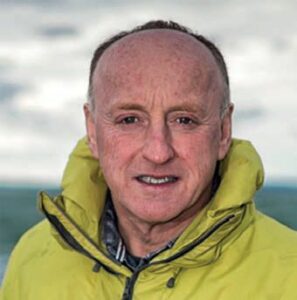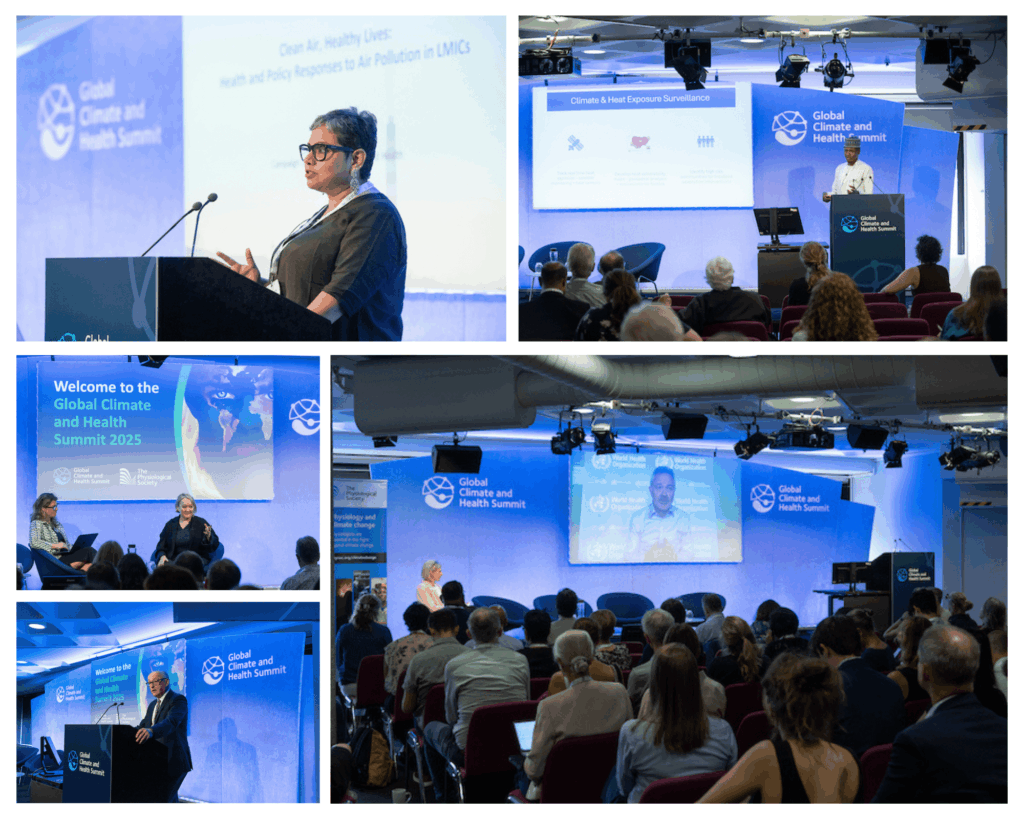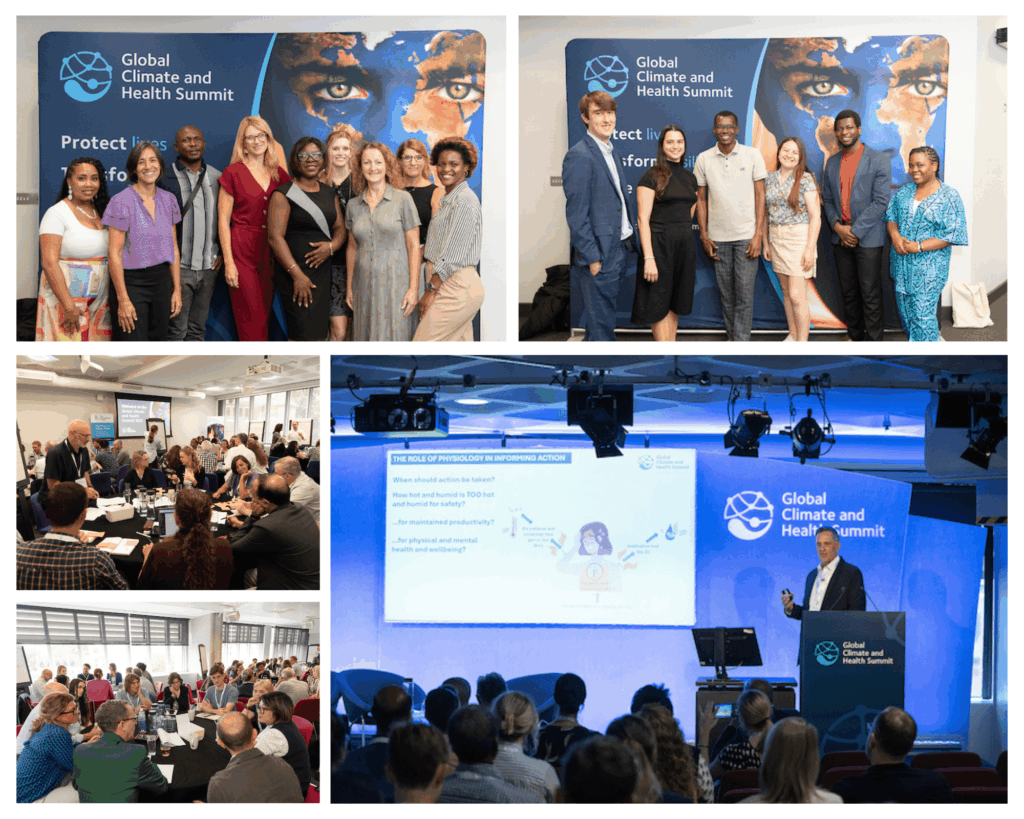
By Professor Mike Tipton, Chair of the Global Climate and Health Summit 2025
Professor of Human and Applied Physiology, University of Portsmouth
Wow! As I stood on stage last Thursday afternoon to give my closing remarks to the Global Climate and Health Summit, I was inspired by what we had all achieved over the two days, hopeful because of the determination for action from participants, and excited to get to work. I said “This is just the beginning”, and I meant it.
Last week, we welcomed participants from around the world for the Summit, and it opened with a clear message: climate change is already damaging health – action must now match the urgency. Kerry McCarthy MP, the UK Government’s Minister for Climate Change, and Dr. Douglas Mombeshora, the Zimbabwe Government’s Minister of Health and Child care, helped set the tone on Day One, acknowledging both the scale of the crisis and the opportunity for political leadership.
With standing room only in London, a long waiting list to attend, and with many more joining online, the Summit was a powerful display of global commitment. The Physiological Society brought together a huge breadth of people engaged in tackling issues related to climate and health. This included physiologists, policymakers, politicians, funders, legal experts, government officials, engineers, health professionals, international organisations, NGOs, security officials, community leaders, people with lived experience and many more. All were united by the goal to protect lives in a changing climate, while building a low carbon, resilient future.
We structured the Summit around three strategic pillars: “Protect lives”, “Transform resilience”, and “Thrive together”. Across keynote presentations, panel discussions, thematic strands, and participatory workshops, we created space for ideas to be shared, tested and shaped – not just through presentations, but through dialogue and collaboration.
We designed the Summit to be different: interactive, diverse, inclusive, and action-focused. On Day One, sessions across parallel strands tackled three critical, interconnected challenges of air pollution, sustainable nutrition, and heat resilience. All of these will be worsened by climate change and all with deep physiological consequences. The data shared were sobering, including:
- Air pollution causes 7 million premature deaths each year
- 99% of people breathe air deemed unsafe by the WHO
- Heat-related deaths in older adults have increased by 85% in the past 20 years
- In the UK, poor diets are estimated to cost £268 billion annually across health and related systems
Yet the message from participants was one of determination, not despair. Day Two’s workshops gave attendees the chance to co-create practical solutions and form new insights across disciplines and geographies.
We were honoured to welcome Sir Jeremy Farrar from the World Health Organization to open Day Two of the Summit. His remarks reinforced why physiology must help shape solutions.
Physiology is essential to understanding and responding to the climate crisis. It tells us how climate impacts play out in the body – through heat stress, air pollution, malnutrition and more – and helps define the physiological limits to human survival. That makes it central not only to adaptation, but to mitigation too: there is no transition if people can’t survive it. That’s why over the last few years The Physiological Society has become a leader in tackling the issues around climate change and health, and why we led the Global Climate and Health Summit. As the home of the science of life, there is an urgent need to bring physiology to the heart of many of the major issues challenging humanity, including climate change and, as the Summit clearly demonstrated, physiological understanding must be integrated with the wider systems, disciplines, policies and partnerships needed to deliver real-world change. Just as an engineer needs to understand the forces acting on a bridge to build one that stands, we need to understand how climate stress affects the human body if we’re going to design systems that protect people.
So, what happens now?
The true measure of success for the Summit lies not in the event itself, but in what it delivers. This Summit was never meant to be a one-off; it’s a launchpad. We’ve already started working on the interim report to capture the key themes from the workshops, and this will be released shortly. It will be followed by a Summit Roadmap for Action later this year.
With our Summit participants, we now have a fantastically engaged community. And this challenge will require all of us to act. Here’s how you can stay involved:
- Sign the Guiding Principles Consensus Statement – to align behind a shared agenda for impact.
- Join the Climate and Physiological Resilience Network – to connect across science, policy and practice
- Take part in the follow-up roundtables in September and October – where we’ll keep the momentum going and drive the Summit Roadmap forward. Keep an eye on your inbox.
Finally, thank you to everyone who helped make the Summit possible – especially the speakers, the team at The Physiological Society, the Summit Steering Group, and our partners at Wellcome.
Most all, thank you to all the Summit participants. At the outset, we asked you to roll up your sleeves and participate with commitment and passion – and you did just that. The energy, rigour and generosity shown across the two days have laid the foundations for something bigger. For me, watching researchers, city leaders, funders, civil servants, and climate experts forming new collaborations and working together – with actions grounded in science and focused on people – gave me great hope for the future, and I am sure the connections made will be one of the most powerful outcomes of the Global and Health Summit.
This is just the beginning. Now we get to work.



